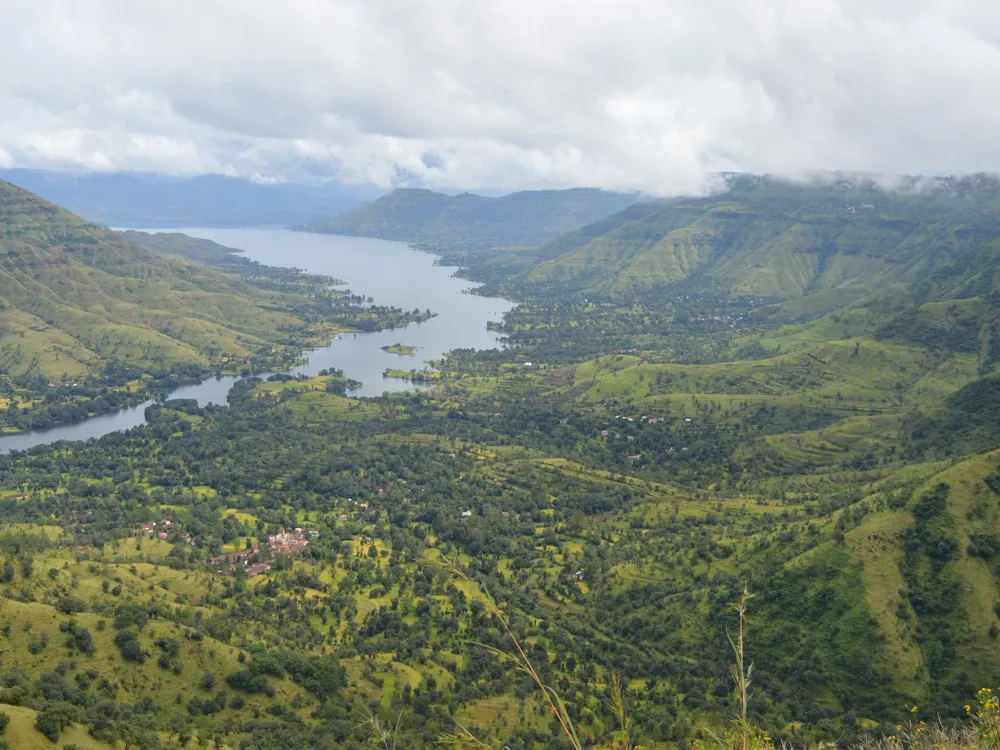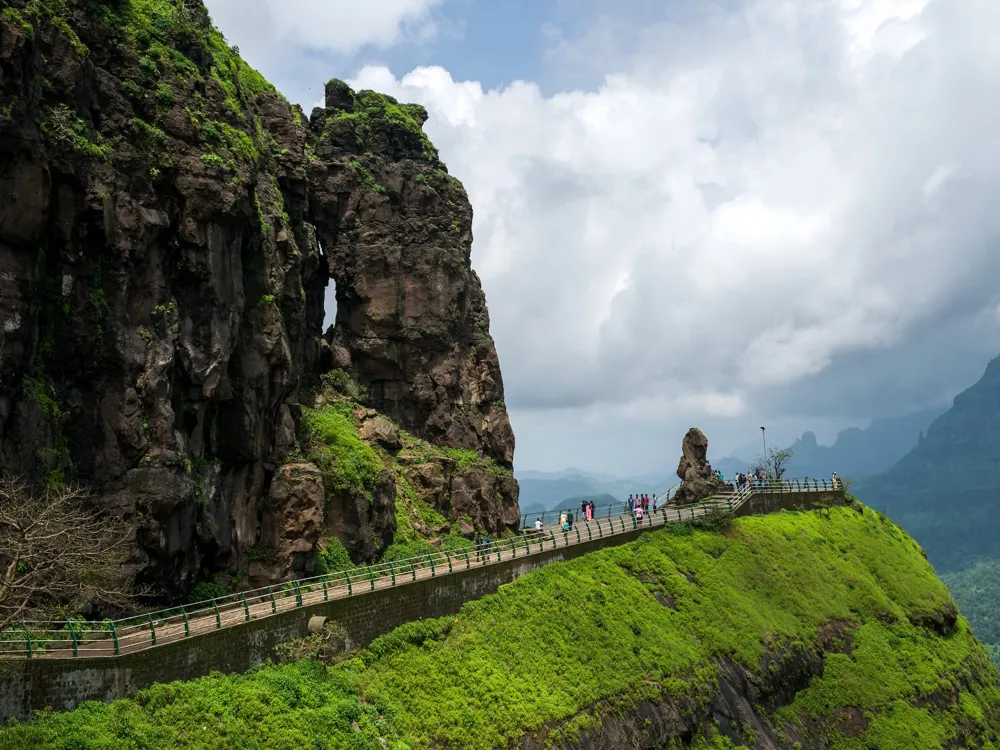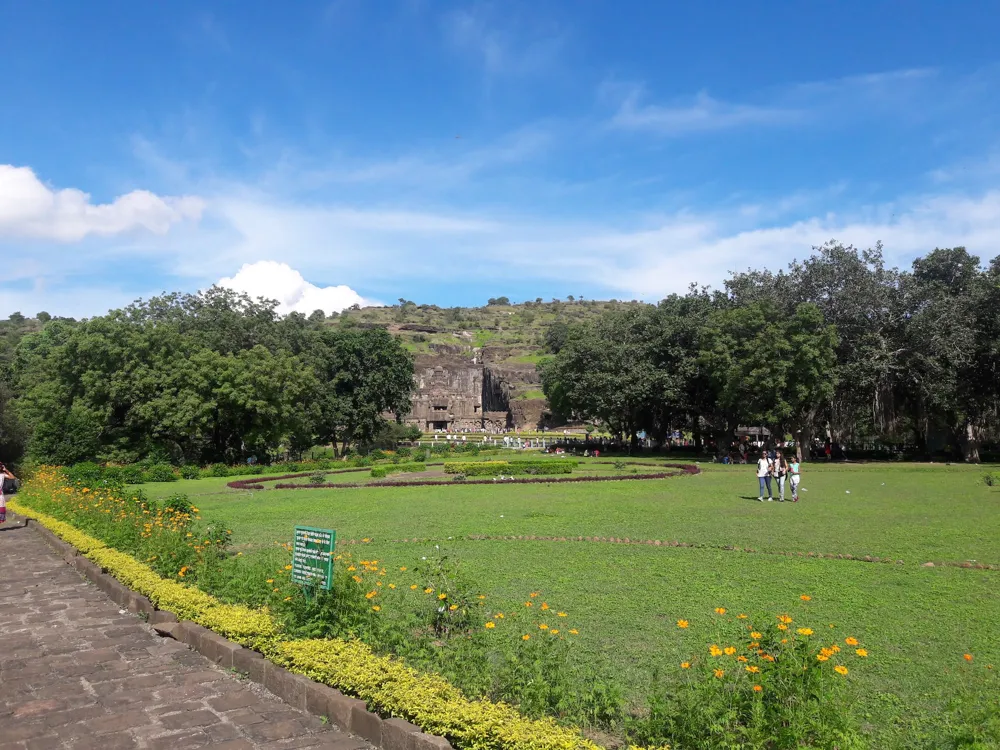The Statue of Ahimsa, located in Nasik, Maharashtra, is a monumental tribute to Jainism and its teachings of non-violence and peace. Standing tall in the serene landscapes of Maharashtra, this statue holds a special place in the hearts of both devotees and admirers of architecture. As the tallest Jain statue in the world, the Statue of Ahimsa depicts the first Jain Tirthankara, Rishabhanatha, also known as Adinatha. The statue is not only a spiritual symbol but also a marvel of modern architecture and engineering. It was unveiled in 2016 and has since drawn visitors from all corners of the globe, intrigued by its spiritual significance and grandeur. The statue’s location in Nasik, a city renowned for its historical and religious significance in India, adds to its allure. Nasik, situated in the Western Ghats, is dotted with ancient temples and vibrant cultural heritage, making it a fitting home for this awe-inspiring Jain monument. The Statue of Ahimsa, with its tranquil surroundings, provides a perfect retreat for spiritual seekers and those looking to escape the hustle and bustle of city life. The architecture of the Statue of Ahimsa is a blend of traditional Jain design and modern engineering. Crafted meticulously out of white marble, the statue stands at an impressive height of 108 feet. The choice of white marble is symbolic of Jainism, representing purity and peace. The statue's intricate carvings and detailed depiction of Rishabhanatha are a testament to the skill and dedication of the craftsmen. The statue's design follows the principles of Jain architecture, characterized by its attention to detail and emphasis on symmetry. The facial features of the statue exude calmness and serenity, capturing the essence of Ahimsa, or non-violence, which is central to Jain teachings. The statue is seated in a meditative pose atop a hill, surrounded by lush greenery, enhancing its spiritual ambiance. The ideal time to visit the Statue of Ahimsa is between October and March when the weather in Nasik is pleasant, making it comfortable to explore the outdoors and enjoy the serene environment of the statue. Visitors are advised to dress modestly, keeping in mind the spiritual nature of the site. It's also recommended to maintain a peaceful demeanor, respecting the sanctity of the statue and its surroundings. While photography is allowed, it's important to be respectful and avoid disturbing other visitors. Using a camera without a flash is advised to preserve the tranquil atmosphere of the location. The Statue of Ahimsa is well-connected and accessible by various modes of transportation. The nearest airport is in Mumbai, from where you can take a train or bus to Nasik. The statue is also reachable by road, with several bus services operating from major cities in Maharashtra and neighboring states. For those driving, Nasik is connected via well-maintained highways, offering a scenic route to the statue. Read More:Overview of the Statue of Ahimsa
Architecture of the Statue of Ahimsa
Tips When Visiting the Statue of Ahimsa
Best Time to Visit
Dress Code and Conduct
Photography
How To Reach the Statue of Ahimsa
Statue of Ahimsa
Nasik
Maharashtra Goa
NaN onwards
View nasik Packages
Weather :
Tags : Landmark
Timings : 24 hrs
Time Required : 1 - 2 hrs
Entry Fee : No Entry Fee
Planning a Trip? Ask Your Question
Nasik Travel Packages
View All Packages For Nasik
Top Hotel Collections for Nasik

Private Pool

Luxury Hotels

5-Star Hotels

Pet Friendly
Top Hotels Near Nasik
Other Top Ranking Places In Nasik
View All Places To Visit In nasik
View nasik Packages
Weather :
Tags : Landmark
Timings : 24 hrs
Time Required : 1 - 2 hrs
Entry Fee : No Entry Fee
Planning a Trip? Ask Your Question
Nasik Travel Packages
View All Packages For Nasik
Top Hotel Collections for Nasik

Private Pool

Luxury Hotels

5-Star Hotels

Pet Friendly





















